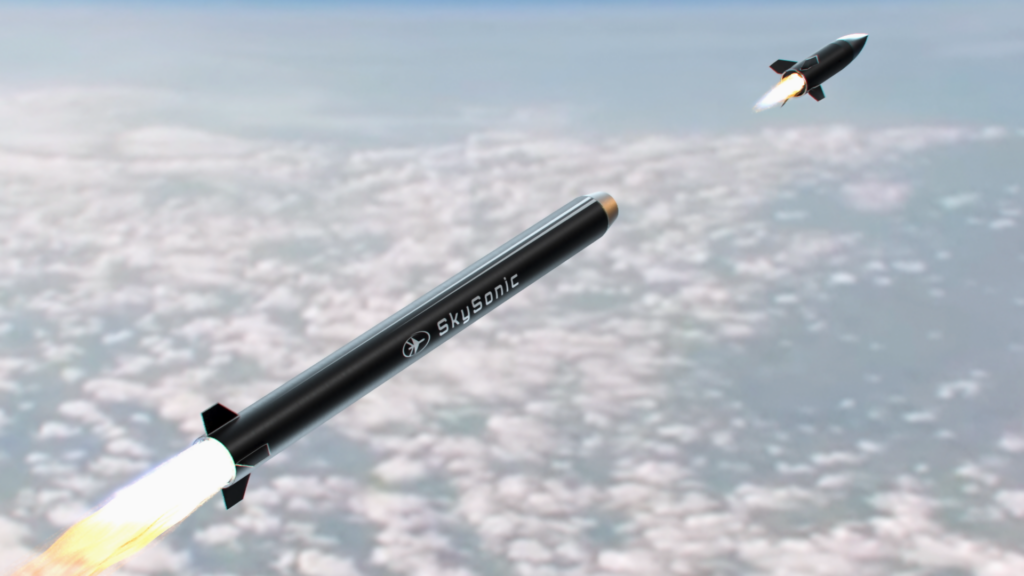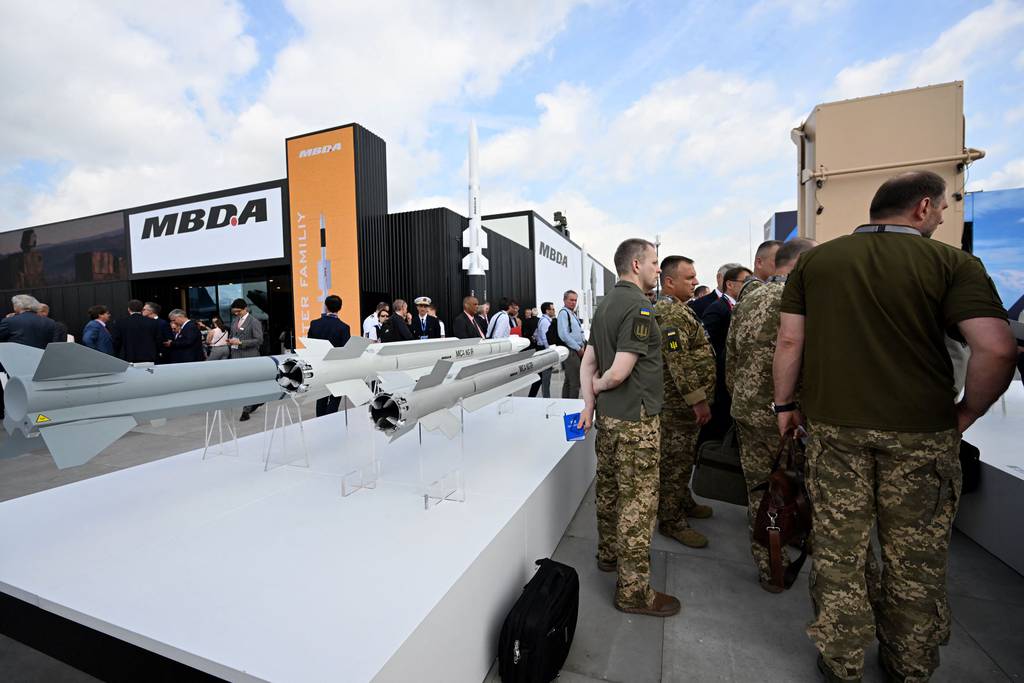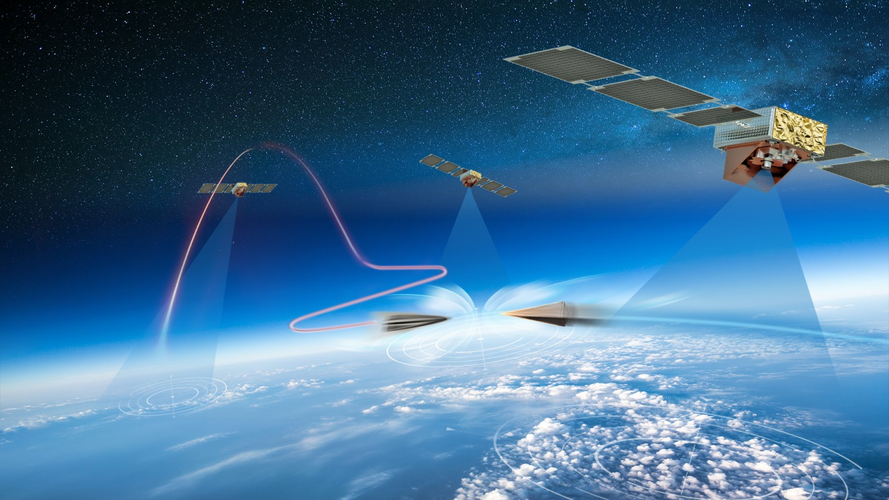aonestudio
I really should change my personal text
- Joined
- 11 March 2018
- Messages
- 2,964
- Reaction score
- 7,493

Odd that the KKV doesn't have any aero surfaces, considering it's for HGV intercept.
I wouldn't have thought that DACT on its own could give 300g lateral.
That looks like a 24" booster, give or take.View: https://twitter.com/Rotorfocus/status/1670375071557320706
MBDA three stage Aquila hypersonic interceptor for the EU HYDIS project which was created on French pressure after the MBDA Aquila lost the HYDEF contract to the Diehl/Sener team
That's generally quoted as being the g-force that HGVs can perform. Mentioned in various videos I've watched. I honestly thought a HGV interceptor would need both aerodynamic manoeuvrability and DACT.Where does the 300g come from? But I'll agree I'm surprised it wouldn't have both to expand the envelope.
Struck me as being the same 21" diameter as the Aster 30 but the second stage looks much wider.That looks like a 24" booster, give or take.
Could be, though based on the widths of the people that's a minimum.Struck me as being the same 21" diameter as the Aster 30 but the second stage looks much wider.That looks like a 24" booster, give or take.
HYDIS2 is entering the concept phase with “three multistage interceptor architectures,” Rainer Stockhammer, MBDA’s team leader for Twister, tells journalists on the second day of the Paris Air Show here. Two of the architectures to be studied are three-stage, one of which is air-breathing—possibly a ramjet like the Meteor air-to-air missile. The second is a conventional rocket-powered missile with a large booster, while the third is a two-stage weapon with booster. The program will examine and select one of these options for further development at the end of the study.
The Aster 30 is ~4.9m long, this model appears slightly longer (assuming the guy is 6ft exactly). At a guess, I would say 533mm, 305mm and 254mm for the stage diameters and 5.5m long.What would the launcher be? It looks well over 20’/6m long.







Description of the EDF project:Bremen, June 30, 2023. A joint bidding consortium led by OHB System AG (a subsidiary of the space and technology group OHB SE) has been awarded a EUR 90 million grant from the European Commission for the ODIN'S EYE II project, which is being implemented under the European Defence Fund and is aimed at developing a European multinational space-based early warning and tracking system for ballistic missiles. The industrial consortium consists of 38 companies from 14 European member states, including Airbus Defence and Space, Thales Alenia Space, Leonardo and the ArianeGroup.
OHB System is already responsible for collecting and harmonizing the requirements, for the system of systems architecture and for the individual components of the space segment as part of ODIN'S EYE I. In the ODIN'S EYE II project, which will commence in parallel in the near future, OHB will now also be responsible for defining, developing, integrating and verifying the entire mission and system simulator. OHB Digital Connect and OHB Hellas are also part of the industrial team and are responsible for the ground segment and data analysis as well as on-board processing.
[...]
OHB System is also a member of two further industrial consortia which have now also received financial support under the European Defend Fund. The two projects REACTS and SPIDER are also aimed at establishing a responsive infrastructure.
ODIN’s EYE II contributes to the further development of a European space-based missile early warning
(SBMEW) architecture initiated under EDIDP. The target system addresses timely warning, technical
intelligence, missile defence systems against ballistic, hypersonic and anti-satellite (ASAT) threats as
well as proliferation control. The project will leverage and consolidate collaborative efforts by entities
from EU Member States in developing a common SBMEW capability to respond to the current and
future security threats. Related PESCO project: Timely Warning and Interception with Space-based
Theater Surveillance (TWISTER)










Assuming they don't f--k it up. Given the complete failure thus far I'm not holding my breath.
Boeing to Lead Counter-Hypersonic Flight Test, Evaluation for DARPA’s Glide Breaker
ARLINGTON, Va., Sept. 11, 2023 — Boeing [NYSE: BA] will develop and test technologies for a hypersonic interceptor prototype for DARPA’s Glide Breaker program as part of a four-year effort....boeing.mediaroom.com
View: https://twitter.com/BoeingDefense/status/1701227796314345818?s=20
The Avanguard HGV is big enough that it takes most of a UR-100N's lift capacity for one. Makes the offense/defense math shift back to favor the defender. And we've had things like Sprint or HyBEX designed since the 1970s.Assuming they don't f--k it up. Given the complete failure thus far I'm not holding my breath.
Meanwhile, the Missile Defense Agency plans to launch the Hypersonic and Ballistic Tracking Space Sensor mission into orbit later this year on a SpaceX Falcon 9 rocket. This new sensor will have improved sensitivity to detect and track hypersonic missiles, which have lower heat signatures from their exhaust plumes than larger long-range ballistic missiles, making them more challenging to see with the military's existing missile tracking satellites.

 arstechnica.com
arstechnica.com


Drag race: hypersonic threats are slow enough for US missile defenses
Opinion: Contrary to common claims, hypersonic weapons are no wonder weapons for cracking air-defense shields, argue analysts David Wright and Cameron Tracy.www.defensenews.com
Or a divert version of SM-2/6.The summary is a little misleading in that they conclude gliders with a sufficiently high speed can effectively evade terminal defenses (to say nothing of area defenses, which are largely unworkable). Also they note the PAC3 missiles would be superior as terminal defense interceptors for Aegis. I think it would behoove the USN to introduce something with more divert than SM-2/6.
